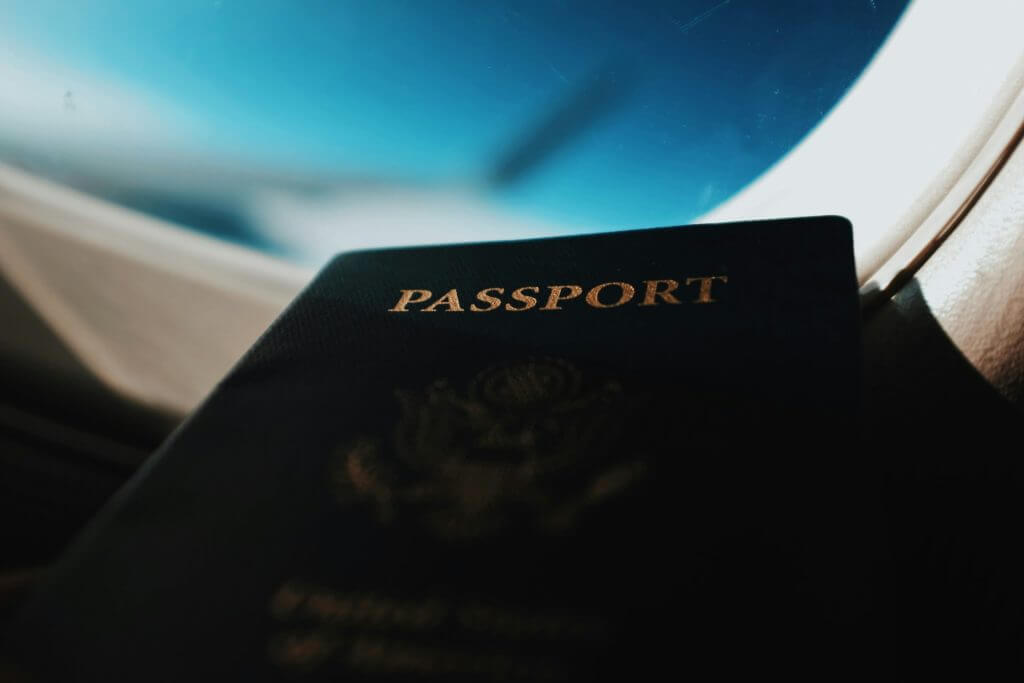The approval of Form I-130 is just the first step in a process that has many steps. Once said form has been approved by USCIS, the next step is to request your immigrant visa or an adjust of status. This step is crucial, as it will be determined if the permanent residency will be granted.
It is necessary that you keep in mind that during this time, you will need to present the documents and the evidence required in your request. At Jaskot Law, we are committed to bring you all the relevant information to face this processes and get to the desired results for your immigration case.
Table of Contents
¿What is a family petition and who can request one?
A Family Petition is a legal process that allows an American citizen or permanent resident to request for a family member to come to the United States. The process starts with the filling of the Form I-130 to USCIS.
This request is the first step to help a family member get the permanent residency card, also known as Green Card. Either way, the possibility to request a family petition depends on the relationship between the petitionary and the beneficiary. Also, it is important to determine if they belong to the family preference categories stipulated by the family-based petition requirements.

Family preference categories to request a family member in the United States
To request a family-based petition, and allow that a family member to immigrate to the United States, it is necessary that the beneficiary belongs to one of the specific family preference categories to be eligible.
Depending on the category of family preference the beneficiary belongs to, it will be determined the priority and the waiting time to get residency. In this way, an American citizen can request for a spouse, parents, kids, and siblings. Meanwhile, permanent residents can request for a spouse and single kids.
The family preference categories to request a family member to the United States are the following:
- First preference (F1): Single sons/daughters of American citizens that have 21 years of age or older.
- Second preference (F2): Spouses and single sons/daughters that are younger than 21 years of age and single sons/daughters that are older than 21 years of age.
- Third preference (F3): Married sons/daughters.
- Fourth preference (F4): Siblings of American citizens that have 21 years of age or older.
¿What are the requirements to request a family member to the United States?
To request a family member to the United States, there are a few requirements that both parts need to meet. The most important requirement is that the petitionary is an American citizen, or that he/she has a legal permanent resident status. Also, they must be able to demonstrate that they have the sufficient economical means to support his/her family member when they arrive to the United States.
Additionally, it is necessary that the family member that is being requested has a qualified and truthful relationship with the American citizen. The qualified relationships include spouses, offsprings, parents, and siblings. The process also implies that an immigrant visa is requested by the petitionary and that USCIS approves said visa.
Things to have in mind when it comes to request a family-based petition
In order to make a family petition, there are a series of aspects that are fundamental to take into account, and those that must be fulfilled for the request to be successful.
- The petitioner is a U.S. citizen or lawful permanent resident.
- That the family relationship between the petitioner and the beneficiary is truthful and verifiable.
- That the petitioner has the necessary means to financially support the beneficiary.
- That the beneficiary does not become a public burden to the U.S. government.
What documents are required to apply for a family-based petition?
To apply for a family-based petition in the United States, it is necessary to provide appropriate documents to the U.S. Citizenship and Immigration Services, such as those listed below:
- Form I-130, Petition for Alien Relative.
- Form I-864, Affidavit of Financial Sponsorship.
- Form I-485, Application for Adjustment of Status.
- Copy of the U.S. citizen’s birth certificate or naturalization certificate.
- Copy of U.S. passport or Green Card.
- Evidence of family ties as relevant to each case.

Who cannot be petitioned in the United States?
There are certain restrictions as to who may be petitioned for legal status in the United States. For example, U.S. immigration law does not allow citizens and permanent residents to petition for cousins, aunts, uncles, nieces, nephews, or grandparents.
In addition, there are other types of exclusions to the family petition, such as those mentioned below:
- Adopted children: if they have been adopted after they have reached 16 years of age.
- Stepchildren: if the marriage took place after they reached 16 years of age.
- Spouse: if you have obtained permanent residence through a previous marriage and at least 5 years have not passed.
What happens if a fraudulent family petition application is made?
The consequences of a fraudulent family petition application are serious and can negatively impact all parties involved. U.S. Citizenship and Immigration Services takes fraud and misrepresentation in immigration applications very seriously, and if a fraud situation is discovered, the petition may be denied and the petitioner may face legal penalties, including fines and imprisonment.
As if this were not enough, a false family petition application can result in permanent disqualification from obtaining U.S. immigration benefits in the future. This means that the applicant may be barred from obtaining a visa, green card or citizenship in this country. In some cases, the applicant may also be deported.

Steps to initiate a family-based petition
The family petition process can be complex and, many times, overwhelming, but by following certain steps and enlisting the help of an experienced family petition attorney, your case is more likely to be successfully resolved.
STEP 1: Eligibility verification according to family preference categories.
STEP 2: File Form I-130 with USCIS, along with the required filing fee and documentation.
STEP 3: Wait for the review and resolution of your case. USCIS will provide you with a notification with your case number after receiving your documentation. You can view updates on your case online at the official USCIS Status of My Case page.
STEP 4: If your application is approved, USCIS will notify the beneficiary to go to the nearest consulate, or if residing in the United States, the beneficiary will be advised to file a Form I-485 to process your Adjustment of Status.
STEP 5: Send your documents to the National Visa Center (NVC).
STEP 6: Perform the relevant medical examinations and prepare for the interview at the embassy or consulate.
STEP 7: Wait for the results of the visa petition before you travel to the United States.
Grounds for denial of a family petition
While the family petition is a means by which the U.S. government allows its citizens and permanent residents to preserve their family ties, there are several reasons why a family petition request may be denied. Among the most common reasons are those listed below:
Errors in the presentation of documents. Failure to fully and completely submit all relevant documents and evidence may result in your application being deemed inadmissible.
Failure to attend scheduled interviews. USCIS will interpret missed appointments and interviews that are crucial to completing this process as abandonment of the application.
The physical examination is failed. If the beneficiary fails his or her physical examination for any reason, the family petition will be considered inadmissible.
You do not have the necessary means to sponsor a family member. If the petitioner does not have the financial means to sponsor his or her relative in the United States, the family petition will be denied.
There is a criminal record. If the beneficiary has committed any crime, the family petition will be rejected.
The beneficiary represents a risk to national security. If USCIS believes that the beneficiary poses a danger to the national security of the country, and that the beneficiary may violate the laws in any way, the family petition will be denied.
I-130 approved: What’s next?
So, what happens after the i-130 is approved? Once the family petition application has been approved by U.S. Citizenship and Immigration Services, the immigrant visa application process will begin. This process begins when USCIS sends the approved family-based petition to the Department of State for processing at the National Visa Center (NVC).

If the immigrant visa is granted, the beneficiary will receive a packet from the National Visa Center (NVC). This packet will include the visa and important details for arrival in the United States. Once the USCIS Immigrant Fee is paid, the beneficiary will be able to proceed with the Adjustment of Status application.
Detailed steps to follow after my family-based petition application is approved.
The approved family petition is only the first step on the road to obtaining permanent residency or U.S. citizenship. Upon approval of your family petition application, there are certain crucial steps you must follow. This process can be confusing, and it is important that you are well-informed to avoid unnecessary complications.
STEP 1: Wait for the Notice of Action 2 (NOA2) from USCIS. This document issued by the U.S. Citizenship and Immigration Services will notify you of the approval of your family petition application. Remember to keep it in a safe place, as you may need it in the future.
STEP 2: Your approved Form I-130 will be sent to the National Visa Center (NVC) where your application will be processed. At this step, all documents will need to be submitted, and the appropriate fees will be requested.
STEP 3: You will receive your case number and a welcome letter with instructions to follow. Make sure that the NVC has at least one email and mailing address so that all necessary documentation can be sent to you.
STEP 4: Pay the appropriate fees for the immigrant visa and Adjustment of Status process prior to arranging an interview.
STEP 5: Complete the online Form DS-260 corresponding to the Immigrant Visa Application. Once completed, print the confirmation to have available during the interview.
STEP 6: Complete Form I-864 Affidavit of Support.
STEP 7: Attend the interview at the consulate or embassy agreed upon by the NVC. You will receive a letter indicating date, time, and place of the interview.
STEP 8: If you pass the interview, you will be notified that your visa has been approved and your passport must be stamped.
The approved family petition is only the first step on the road to obtaining permanent residency. Being informed about the processes involved in your application is crucially important. That is why we at Jaskot Law provides you with this guide so that you will know what to do after your family petition is approved. Our goal is to ensure that your immigration process runs as smoothly as possible.
Frequently Asked Questions
What is a family petition, and who can petition for a family member?
A family petition is a legal procedure that allows a U.S. citizen or permanent resident to request the entry of a family member into the country. The process is carried out through a petition expressed by the filing of Form I-130 with the United States Citizenship and Immigration Services (USCIS).
What are the requirements to petition for a family member in the United States?
To petition for a relative in the United States, the main requirement is to be a U.S. citizen or have lawful permanent resident status. In addition, the U.S. citizen must demonstrate that he or she has sufficient means to support his or her relative when he or she arrives in the United States.
What documents do I need to apply for a family petition?
To apply for a family petition, it is necessary to provide several documents to the U.S. Citizenship and Immigration Services. These include Form I-130, Form I-864, Form I-485, a copy of the U.S. citizen’s birth certificate or naturalization certificate, a copy of the U.S. passport or Green Card, and evidence of the family relationship.
Ana Aguirre Santos is an advanced student of the National Sworn Translator’s Degree in English at the National University of Córdoba (Argentina) where she specializes in legal and commercial translation. She has worked as a translator and copywriter for several websites, creating relevant and reliable content for a variety of users.


